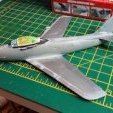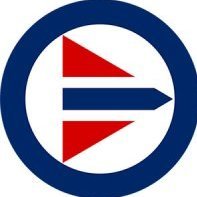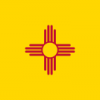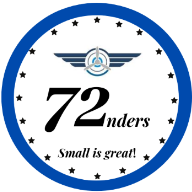Search the Community
Showing results for tags 'mustang'.
-
Hi all. There's not much to say about this kit other than it was an enjoyable build. I've read a few articles and seen a few build/review videos and I don't know what the issues were that folks found. This thing fell together with the only care being taken on the clean-up of the sprue points. A few additional items in the way of Eduard exhausts and SBS Model block tread tires. An included set of resin tires for the RAAF option from Arma Hobby would have been a welcome addition as the build was held up for a week while waiting for them. Paints are Mr Color lacquers along with a stack of others including oils, pigments and a few acrylics for the interior. I'd build another one for sure. Bancroft the bench mascot for scale. Cheers, Mick
- 12 replies
-
- 27
-

-
- RAAF
- Arma Hobby
-
(and 1 more)
Tagged with:
-
Here we have the Me 262 & P-51B Combat Set by Revell (1:72 03711). I have (re)learnt a lot for my 2nd and 3rd builds after many many years away from the hobby. Lessons such as nose weights, how small decals are and how bloody fragile the gears/pros are! Next builds, I'll paint before assembly and attach the fragile bits and touch up AFTER main body is built, painted and decals applied! Unless I get impatient :) Anyway, hope you enjoyed reading my 2 threads while these were in progress and laughed or a had a chuckle at my 'oh bugger' moments of these 2 (Links below). "What's next?" I hear you say? Well, I have cracked open my DHC Beaver Vintage Classics Airfix 1:72 A03017V ... But I do also want to build my tank a King Tiger II Production Turret (Tamiya 1:35 3516)... Choices! Feel free to follow me, for some laughs :)
- 3 replies
-
- 13
-

-

-
- Messerscmitt
- Mustang
-
(and 1 more)
Tagged with:
-
I'm pleased to present my most recent build, Eduard's 1/48 Mustang Mk. IV in a natural metal scheme depicting KH716 as flown by Squadron Leader Murray P. Nash of No. 3 Squadron, Royal Australian Air Force, in Fano, Italy, January, 1945. The model is presented on a pre-made base by Zoukei-Mura, which remains the best $20 I ever spent in this hobby. The build overall was smooth, with only a couple difficult areas, all of my own doing. The Mk. IV version requires a few features to be removed from the base P-51 fuselage, and I made a right hash of excising an extraneous hatch under the air scoop, resulting in several rounds of filling (with putty and super glue) and some haphazard re-scribing. Please respect the rivets that were lost forever in the process and avoid too a close examination of the area. The propeller, spinner, and various flappy bits (elevators, ailerons, etc.) can all be added at the end of the build with no issues, making the painting easier. I used some, but not all, of the included PE parts, and after taking pictures I realized that the starboard gear bay landing light is still stuck to a piece of blue-tac atop a toothpick in my spray booth. The finish is a combination of Mr. Color C-8 Silver for the puttied/painted wings and fabric covered elevators and Mr. Color Super Metallic SM-201 Super Fine Silver 2 for the natural metal. Mr. Color lacquers are my go-to paints, so I opted this time for their metallics as opposed to the Alclad I used for my prior NMF build. I started with a primer base of Mr. Finishing Surfacer 1500 Grey, and then taped off a few fuselage panels to get some tonal variation on the cheap before covering the aircraft overall with Mr. Color GX-2 Ueno Black, a very durable and glossy base coat for the metallics to come. Since I view every new build as an opportunity to buy new stuff, I picked up Mr. Rapid Thinner, which Gunze recommends for their metallics. The C-8 Silver sprayed neat and true, and I thought the SM-201 Super Fine Silver did the same . . . until I masked over it to pick out the exhaust panels with dark iron paint. Sheets of the Super Fine Silver came off with the tape, down to the gloss black undercoat, as frightening display of paint lifting as you're likely to see. I sanded down the Super Fine Silver, which required distressingly little encouragement, and then resprayed and prayed, using my standard Mr. Levelling Thinner instead of the rapid thinner. I then sprayed a gloss coat -- Alclad Aqua Gloss -- on top as soon as it dried to protect it, which pretty much did the trick. A few areas still chipped on me with further handling, but they've been hidden as artfully as possible in the pictures. I'm not sure if the lifting came from not completely degreasing the black gloss undercoat after handling (I know, I know!), the rapid thinner, the paint/thinner ratio, the ambient temperature (on the cold side), or my just failing to properly propitiate the gremlins who live in my airbrush. I'm assuming it's a combination of all of those factors. The final colors look metal enough, but I think I might go back to Alclad for my NMF needs in the future. This build saw my first experience with Eduard's "removable film" decals. They were hit and miss for me. I wound up with some tearing/chipping on a few of the decals, including the "CV" code on the port fuselage and the red/blue flash on both sides of the stabilizer. The tears at least look sort of like organic paint chipping/wear. I'm an inveterate decal wiggler, trying to get them just right, and I think I didn't get the problem decals bedded down sufficiently. When they worked, though, they worked a treat. For the most part, I found that a nice dollop of MicroSol left overnight did the trick, and I just worried around the edges of the film with a toothpick until I peeled up enough to grab the film with tweezers. But it was nerve-racking. Can't argue with the results, though -- the decals with the removed film look sharp and almost painted on, both the main decals and the stencils, the latter of which I applied perhaps 80%. I covered over the decals with a further coat of Aqua Gloss, as I was uncertain how the exposed decals would react to the white spirit and oil paints in the next step. I wanted a fairly dirty finish, to reflect the wear and hard living of a plane in-theater, so I doused it with a wash of thinned Payne's Grey and Black oils. I tried to leave some build-up in panel corners, and I think the overall effect helped give some dimension and staining to the natural metal finish. Pencils and pigments rounded out the weather process. On the whole, I'm pleased enough with the final result. It should look good on a shelf with the striking red spinner and sky blue rudder adorned with the Southern Cross. I certainly learned a few things about working with a natural metal finish, and while it's nowhere near my best build -- the faults being my own rather than with the kit -- I'm no longer apprehensive about NMF schemes. (Though I still think I'll reward myself with an overall grey USAF bird next just to recover . . .) Thank you for reading and for taking a look.
-
More progress today. I did some chipping and put guns in the holes. Regards
-
I started this 1:48 Tamiya build as "Berlin Express". Unfortunately I cut the anti-glare demarcation slightly low and artwork would have been noticeably misaligned. It was easier to lower the demarcation than raise it so I'm building either "Geranimo" or "U've Had It!". Both planes have similar markings to my original choice. I'm waiting for U've Had It!" decals to arrive from Bob in Canada. THANKS BOB! Here it is to date. The only decal is the port wing because I couldn't figure out how to make the vinyl mask fit over the aileron actuator fairing. Suggestion on how to weather a half camo half NM aircraft would be welcome. Thanks for looking Ron
-
P-51B Mustang (70041) 1:72 ARMA Hobby Originally developed to fulfil a British requirement for new fighter aircraft, the unmistakable North American P-51 Mustang famously went from drawing board to first flight in just 178 days. It went on to become one of the most famous and successful aircraft of the Second World War. Transformed by the addition of Rolls Royce’s legendary Merlin engine, the Mustang went from strength to strength and was eventually developed into several variants. Even though the D model is the most recognised the earlier models were still great aircraft. The B & C were the first to use the Merlin engine which gave better performance over 15000 ft. They were known in RAF service as the Mustang III. The B models were built at Inglewood and the C models which were identical were built in Dallas. The RAF decided that the original hinged canopy did not offer enough visibility for operations and the British corporation R Malcolm & Co designed a sliding bulged canopy for the aircraft which then became known as the Malcom Hood. The search for better all round visibility would lead to the later P-51D, however some pilots are said to have preferred the Malcom hooded P-51B/D than the later P-51D as it was lighter and had better handling, one of the downsides was only 4 guns as opposed to the D's six. Exiting the B/C in an emergency was also said to be easier than the D. The Kit This is a new tool kit from ARMA Hobby which seems to have garnered good reviews. It really also was time we had a new tool B/C in 1/72. The kit is a rebox of the P-51B/C which we reviewed here but here comes without the PE of the earlier kit; however tape masks are included here (but now pictured in the review). The kit arrives on two main sprues, a clear sprue, and sheet of decals. The quality of the parts is first rate, all surfaces feature fine engraved panel lines, there is a great deal of moulded in detail in the fuselage and main wheel wells. Bombs and two types of drop tanks are provided for the wings. Due to the different options being provided from the kit its worth while checking the instructions for these before starting work. Construction starts in the cockpit. The frame for the seat is built up and added to the floor with the seat then being fitted. Belts here are provided as decals. The fuel tank is installed behind the seat with the radios going on top. The control column is added in front of the seat. Next up the instrument panel and its coaming are built up. with instruments being provided as decals. Work then moves to the inside of the fuselage with side parts going in, again here decals are provided for more details. The main radiator is assembled, following this it can be installed in the right fuselage half, along with additional controls and the tail wheel compartment parts. More parts and details are added to the left fuselage half. Once all of this is complete the tail wheel and cockpit can be installed, and the fuselage closed up. Moving onto the wings, the wing spar part is installed along with the parts for the main wheel well. These are installed into upper wing, and the two wing parts can be assembled. The separate flaps can then be added. The wings can then be mated to the fuselage. Following this at the rear of the fuselage the tail and tailplanes can be added. The main landing gear can then be made up and fitted. At the front of the fuselage the chin intake, propeller; and exhaust are added., with two different styles of exhaust stacks being included. Different canopies are provided for the model, though for the main decal options in this kit only the Malcom Hood will be used. The normal canopy being used for the bonus decal option. There are parts for this canopy to be open or closed as needed. A slightly larger Malcom hood is supplied for the slid back option. Then if needed bombs or drop tanks can be fitted to the wings as needed. Markings There are printed by Techmod so should pose no problems. 4 marking option are provided for the kit (plus a bonus option); "Old Crow" 43-248423 B6-S, Cpt Clarence "Bud" Anderson, 363rd Fighter Sqn, 357th Fighter Group June/July 1944 "The Mighty Midget" 43-6964 C3-G, Lt James H Clark, 382nd Fighter Sqn, 363rd Fighter Group, Maupertus, France July 1944 "Geronimo" 42-106473 G4-N, Cpt John Pugh, 362nd Fighter Sqn, 357th Fighter Group, July 1944 "Patty Ann II" 42-106872, John F Thornell Jr. 328th Fighter Sqn, 352nd Fighter Group, Bodney 1944 The Bonus option for the kit is "Geronimo" in its early 1944 fit with the original canopy and red/yellow nose. Conclusion It is great to see this important aircraft being kitted by a new manufacturer. The kit seems to have been very well received by modellers. Very Highly recommended. Review sample courtesy of
-
Just for fun, I thought I'd do something really beat-up, so, I'm taking a stab at 'Tex" Hills P-51b in China, 1945. It's ICM's P-51b, with some scratch building in the cockpit, a homemade vac canopy, and some parts from the spares box. I might tone down the chipping on the nose, I just haven't decided yet, On the real aircraft, the paint appears to have been coming off in sheets! Thanks for looking, Colin
-
Halberd Models (https://www.ebay.co.uk/str/halberdmodels) from Ukraine is to release on September 20th, 2022 three Mustang resin kits - ref. 001-345 - North American XP-51 Mustang - ref. 001-355 - Rolls-Royce Mustang Mk.X - ref. 001-355 - North American Mustang Mk.I Source: https://www.facebook.com/permalink.php?story_fbid=pfbid0YpfivSysCSibsr7q7Z2XTWBrxp8hAWcEYTavbxCrVif4rDJ7kkPdfkizFzJaeJG9l&id=100064057054695 V.P.
- 25 replies
-
- 16
-

-
After being bummed about trashing my last simple Bf109F-4 trop build near the end of completion, I got back to the bench with this Mustang. I picked another simple to build kit, a Tamiya 1/48. This time around I went with a little more challenging paint job. God willing it's gonna finish as "Berlin Express" Other than adding a flat cockpit floor and gun blast tubes it's gonna be OOB. I'm really happy with it so far. The paint job should be fun. Thanks all for your support. Ron
-
Hello, Here's my 1/72 Revell 1/72 P-51B. This one was started as a simple build when I was away from home for a week early this year. It then moved to the shelf of doom for a while, but got resurrected a few weeks ago. The kit is not the most accurate one and the clear parts are pretty bad, I even used a mask set on them which I normally never use. But overal a fun build, with nice surface detail. I used the kit decals, minus the famous yellow tail markings, which didn't seem to be present on this particular plane. Other Mustangs (26th FS) in the unit did have them. Painted with Mr. Hobby acrylics and some Revell Aqua on the spinner. Thanks for looking. Pete
-
Good evening everyone, My name is Marcelo Allende, I'm from Argentina, and I want to share in the forum my first finished work in this return to the hobby. Now that I am retired and thanks to that I have a lot of free time, I chose to practice this beautiful hobby again. 34 years ago during that previous stage, (very different from today) in regard to specific materials and the information that was available at the time of assembling a kit; today everything is so different and it helps a lot for the modeller to face a project with much more calm and investigation. For this kit in particular, 35 days of work were necessary to finish it, It is not necessary to talk much about the kit, I think it is well known by all, I was very surprised when comparing it with the models built during the 80's.It is assembled without any additions, just as it came out of the box; i just added some wires in the cockpit and landing gear bays. To paint it I used alclad aluminum and enamels with homemade mixtures. For the weathering I worked with oils, and some brown pigments applied with a brush as well as powdered graphite to shade some areas. Techniques that I had never used before, and thanks to the information published here in the forum, they have opened the doors for me to be able to achieve results that I would never have dreamed of before.. There is still a lot to improve, 35 years is quite a long time, my eyes see less than before but with more practice the planes will be better =). Greetings to all, have a good weekend and excuse my writing because English is not my language...
-
This is a great little kit from Meng. There's plenty of detail, although the surface detail may not to be to some people's choice (yes I know about Mustang wings and putty). The kit is snap tight and can be assembled without any glue at all. I did use glue. although it's near perfect fit allows you to snap the parts together and run glue into the joints. I did add some seat belts to the cockpit. Decals look very thick and I had my doubts about them, but the right application of setting solution and a press down saw them dry nicely and settle into the surface detail. You do get the option of cuffed and uncuffed propeller along with different spinner and canopy. Two decal options are included, both PLA aircraft. I chose the one with the biggest national insignia. Rudder flash is supplied, but I chose to mask and paint mine. The Communist Chinese captured around 40 Mustangs from Nationalist forces at the end of the Chinese Civil War, when the Nationalist forces retreated to Taiwan. I'm not sure how long they were in service for, but were probably quickly retired once the supply of Russian Mig 15's arrived.
-
Hi there, Last one out of the production line. Ok, yes, I've yet to add two wing tanks, and one last stencil... I did have a lot of fun with this one, but yet I managed to make a lot of errors and had my share of bad luck, don't worry! So, I'm not 100% happy with the result. 70% maybe? Still, I like it, and hope you will Weathering much too strong for this scale, to be more specific for the exhausts and the guns, antenna wire much more 1/32 than 1/72, bad fi tof the black upper antenna (Gonio?), etc... Also, bad luck with PMA decals. Everything went well with the stylized sun on six positions, but I had three different sets of numbers and stencils wrecked before the one that decided to stay in place! This specific F-51 is part of a group of aircraft that were paid by different donators, 067 (F-51067; 44-74956) being paid for by Taipei City(City name is written under the pit. Any comments welcome, do not hesitate to tell me what you think, whatever it is.
-
A 1/48th N.A. P-51D Mustang. More tomorrow. Source: https://www.facebook.com/officialairfix/posts/10154504386816271:0 Oh no. I would have preferred... (blablabla) For the record: Meng soon to release new tool P-51D: http://www.britmodeller.com/forums/index.php?/topic/235009127-148-north-american-p-51d-mustang-by-meng-box-artcads-release-2016/ Eduard 1/48th Mustang family in project... http://www.britmodeller.com/forums/index.php?/topic/234974169-148-north-american-p-51-mustang-family-long-term-project-by-eduard/ HobbyBoss recent easy assembly Mustang: http://www.britmodeller.com/forums/index.php?/topic/234922415-p-51d-mustang-iv-hobby-boss-148/ etc. https://www.scalemates.com/search-solr.php?fkSECTION[]=Kits&q=North+American+P-51+Mustang+P-51D+1%2F48 V.P.
-
Good evening all, Tonight I have for inspection the well known Airfix Mustang. I won't run through the build process as everyone should be aware of it by now. As usual, I wanted to pick a less common scheme - this often proves to be the most fun part of model building (the research and gathering of pics). Accordingly, I used an Xtradecal sheet to build an Italian Mustang from shortly following the war, while Italy was awaiting Vampires. They also used P47s, Spitfire Vs, P39s, and heavily modified P38s in this time. In a break from tradition, this one was brush painted instead of spray painted. I think the results are slightly better, as the finish looks a little tired, but in the future I may stick with the rattle cans for the sake of expedience. Right, the pics - Next up will be a Gladiator or 3, the PRU Hurricane (Honest! I just need varnish.) and a 109G. A Defiant may sneak in as well if I get around to finding a spare roundel. Thanks all, Best, Tweener
-
Some of you may be following my 1/72 Glider thread, which is currently stalled awaiting some additional glider mojo to get onto the next build, a couple of Grunau Baby’s. In parallel with that build, I have also been working on a several other 1/72 aircraft (no WIP for these). One of those builds was this one....... So here is my rendition of the RS Models F-51H. First, the box art which is pretty striking and a scheme I seriously considered doing, but in the end opted for the all red (topside) aircraft. And the rear shows the options available from this kit, all decals supplied within. The decals themselves were superb quality. In my experience, RS kits are quite a challenge to build but, IMHO they carry very subtle surface detail and seem to compare very well in accuracy and shape, when finally knocked into shape......... oh and I do quite like them! This one was no less of a challenge, and certainly very basic when compared with the recent Arma Hobby P-51’s built on here by both @Procopius and @Cookenbacher. Those builds have inspired me to build a further mustang, from an Arma Hobby kit of course! So there you are Edward and Cookie, I've actually finished it! As there was no WIP, here are a few shots in progress for those who like to see bare plastic......... And just to prove there is something inside the cockpit. A bit close and cruel this one! After two coats of Tamiya LP-7 Red I used quite a cocktail of paints, having now got over my dread of mixing different types of acrylics, lacquers and enamels. Care and consideration in application is key of course, but mixing paint types does work if you are careful! The whole model received a primer coat of Mig Ammo One Shot grey primer. This paint goes on beautifully straight from the bottle, airbrushed of course. The undersides were painted with AK Xtreme Metal Aluminium, and the topsides are Tamiya Lacquer LP-7 Pure Red. The grey undercoat helped to slightly dull the brightness of the red, which is what I was after. The wingtip black bands were masked and airbrushed using Tamiya semi-gloss black Acrylic. MRP’s gloss varnish was applied prior to decals, and after decals, followed by some very light oil washes. A final coat of MRP’s semi-gloss varnish sealed everything in. These MRP varnishes have become one of my favourite solutions for finishing coats. I tried to keep weathering very subtle mostly using very light panel washes in slightly darker red brown on top, and grey undersides, as this aircraft was kept pristine for the 1954 gunnery meet. Learning my paint and weathering skills through watching Giorgio's @giemme builds! So, to the completed model. Shots are from my phone and the red seems to have come out very intense. In normal daylight it is slightly less so, and all of the very fine surface detail does indeed show up well! Some extra shots as @Winenut had quite rightly pointed out the panel washes were hard to see in the pictures. I think at certain distances, my mobile gets blinded by the red! And finally a couple of shots with her older stablemates. Comments/questions welcome Thanks for looking and watch out for a QF-86E coming soon in RFI! Terry
- 35 replies
-
- 54
-

-
P-51B Mustang | HobbyBoss | 1/72 Capt. John "Pappy" Medieros, 364th FS, 357th F.G.. USAAC 1944 Finished this on May 20th, 2022. I've seen a lot of terrific Arma Hobby P-51B builds lately, so its a little embarrassing to trot this one out... I bought this kit only for the gears and gear doors for my "Geronimo" project since the gears and doors disappeared a long time ago. I didn't plan on making this kit since my recent HobbyBoss experiences were really bad. When I started playing around with it, though, I found that the fit was surprisingly very good and surface detail was pretty nice. So, in an effort to make some room in the stash closet, I decided i'd whip this one together. The decal sheet I used for "Geronimo" had several different schemes on it, so I chose this one because it was the only one that was British dark green and medium sea gray. I had an extra Eduard photo etch cockpit set so I used it to dress up the otherwise spartan interior. HobbyBoss filled in the area behind the seat, and I couldn't find a way to cut it out, so I got creative with painting and making radio from scratch (Pictures follow). And this time I have a pilot @Jackson Duvalier ! -- I found him in a fold of the Monogram box when I was cleaning up after making "Geronimo". My experience with "Geronimo" was that the checkerboard decals were a hair pulling experience, so I elected to paint the checkerboard. My measurements were slightly off, so tolerance stackup resulted in one of the checks being narrower than the rest, but I'm not telling which one. I also painted the yellow stripe on the nose for the same reason. As with every HobbyBoss easy assembly kit, there were some issues. They always goof up the canopy, and this was no exception -- the scalloped windows behind the seat are too small. I probably shouldn't have painted the frame on them, and they would've looked better, but I didn't think of it until I was done. Nobody gets the wing kink right, so I won't even mention it. The intake on the bottom seems too small. The corners on the top of the tail were a little too sharp, so I rounded them. The fit was surprisingly good except for one step on the bottom part of the left cowl, but that was an easy fix. The only other major problem is the propeller: the way they cast it, it looks like the blades are cupped or bent forward. They're not. I wish I had a propeller in the spares box when I was building this because it is really distracting! I painted this with Hataka RAF dark green, medium sea gray and insignia yellow. The red was Mr. Color insignia red. The wheel wells were pretty ridiculous; they were too shallow and the detail wasn't accurate or realistic. I just filled them in with epoxy putty Here's my scratch built radio installed: My Monogram pilot: And here's when the cockpit was finished. The effort in the cockpit was worth it because you can see pretty well into the cockpit through the malcolm hood. Another ridiculous thing... HB only provided one of each style of drop tank. I rummaged around and found exactly one of the style of drop tank I wanted from a Hasagawa P-40. I had to add some details to make it match: Hope you like it! it was not the best kit, but it turned out much better than I thought it would. Comments, questions and constructive criticism welcome.
- 11 replies
-
- 29
-

-
Hello fellow Britmodellers, this is my first completion of the year, and my first build thread in a while that actually leads to the Ready for Inspection section. It's the new 1/72 Arma high back Mustang kit, and it definitely lived up to expectations. It's depicting famous Polish ace, Jan Zumbach's Mustang III when he was commander of 133 Wing. Thanks for looking!
- 15 replies
-
- 52
-

-
P-51B/C Wheels & Exhausts (for Arma Hobby Kit) 1:72 Eduard The new Arma Hobby kit i great in its own right, that has not stopped Eduard from releasing their own updates for the kit. Wheel - Diamond tread (672282) This set of new main wheels features conventionally cast main wheels as well as a set of yellow tape masks (not shown). The kits feature a diamond tread pattern. The casting is upto Eduard's usual high standard. Exhaust Stacks (672279) This set features new exhausts stacks for the main engine and are 3D printed given the size these will always be better than injected parts. The stacks come in a protective plastic case. Exhaust Stacks with fairings (672280) This set features new exhausts stacks with fairings for the main engine and are 3D printed given the size these will always be better than injected parts. The stacks come in a protective plastic case. . Review samples courtesy of
-
P-51 C Mustang Mk.III (70039) 1:72 ARMA Hobby Originally developed to fulfil a British requirement for new fighter aircraft, the unmistakable North American P-51 Mustang famously went from drawing board to first flight in just 178 days. It went on to become one of the most famous and successful aircraft of the Second World War. Transformed by the addition of Rolls Royce’s legendary Merlin engine, the Mustang went from strength to strength and was eventually developed into several variants. Even though the D model is the most recognised the earlier models were still great aircraft. The B & C were the first to use the Merlin engine which gave better performance over 15000 ft. They were known in RAF service as the Mustang III. The B models were built at Inglewood and the C models which were identical were built in Dallas. The RAF decided that the original hinged canopy did not offer enough visibility for operations and the British corporation R Malcolm & Co designed a sliding bulged canopy for the aircraft which then became known as the Malcom Hood. The search for better all round visibility would lead to the later P-51D, however some pilots are said to have preferred the Malcom hooded P-51B/D than the later P-51D as it was lighter and had better handling, one of the downsides was only 4 guns as opposed to the D's six. Exiting the B/C in an emergency was also said to be easier than the D. The Kit This is a new tool kit from ARMA Hobby which seems to have garnered good reviews. It really also was time we had a new tool B/C in 1/72. The kit is a rebox of the P-51B/C which we reviewed here but here comes without the PE and masks of the earlier kit. The kit arrives on two main sprues, a clear sprue, a sheet of decals. The quality of the parts is first rate, all surfaces feature fine engraved panel lines, there is a great deal of moulded in detail in the fuselage and main wheel wells. There are two choices of tail featuring the small fillet tail, and the one with no fillet. Bombs and two types of drop tanks are provided for the wings. Due to the different options being provided from the kit its worth while checking the instructions for these before starting work. Construction starts in the cockpit. The frame for the seat is added to the floor and the seat is fitted. Belts are provided as decals. The fuel tank is fitted behind the seat with the radios going on top. The control column is added in front of the seat and then the instrument panel and its coaming are built up. Instruments are provided as decals. Work then moves to the inside of the fuselage parts with more decals being added. The main radiator is made up and this can be installed in the right fuselage half, along with additional controls and the tail wheel parts. More parts are also fitted into the left fuselage half. Once done the tail wheel and cockpit can be installed and the fuselage closed up. Moving onto the wings the wing spar part is installed along with parts for the wheel well. These are added into upper wing, and the two wing parts can be assembled. The separate flaps can then be installed. The wings can then be mated to the fuselage. At the rear of the fuselage the tail and sailplanes can be added, a finless and filleted tails are provided for the different decal options. The main landing gear can then be made up and fitted. At the front the chin intake, propeller and exhaust are added. Different plates/vents are provided for the lower engine cowl. For the spine different antennas are also provided for the different options. Different canopies are provided for the model. If the normal canopy is to be opened then the modeler has the option for this. A slightly larger Malcom hood is supplied for the slid back option. Lastly bombs or drop tanks can be fitted to the wings as needed. Markings There are printed by Techmod so should pose no problems. 2 marking option are provided for the kit; 42-103532, FB382/PK-G, 315 Polish Sqn RAF, Coolham June 1944 42-103258, FB328/GA-S, 112 Sqn RAF, Lesi Nov 1944 Conclusion It is great to see this important aircraft being kitted by a new manufacturer. The kit seems to have been very well received by modellers. Very Highly recommended. Review sample courtesy of
-
Hello all, This build was another GB with my dad which was completed a few weeks ago. Both kits are Tamiya 1/72, Captain Weaver's mustang was done by my dad, and "Tallahassee lassie" was done by myself. The models were painted with Mr Color Super Metallic 2 Super Fine Silver and Super Iron and Mr Color H8 Silver, NO PRIMER was used. The only AM products that were used are PE for the interiors and antennas. Hope you enjoy! "Tallahassee lassie" : Captain Chuck Weaver's mustang: Some pics of both mustangs together:
- 13 replies
-
- 38
-

-

-
Me.262A-1a & P-51B Combat Set (03711) 1:72 Revell Believe it or not (most of you will), the technologically advanced Messerschmitt Me.262 and the P-51 Mustang did actually square off against each other in the skies over Germany. Not many P-51Bs would have still been in service, but even though there was a huge difference in top speed, the doughty Mustang shot down a number of these shark-like fighters, especially at the weaker points of their flight envelope during take-off and landing, where the low spool-up of the jet engines made them an easier target. This kit from Revell is in their Combat Set range, and puts together these old foes in the one box, both of them being a product of the late 90s. The 262 came out in 1997, while the Mustang was released a year later, although having been moulded in silver styrene this time around, it looks older on initial inspection. Let’s handle them separate in case there’s a (dog) fight. Me.262A-1a The shark-like profile of the Messerschmitt Me.262 Schwalbe and its almost matchless abilities at the time have given it a high profile despite its lack of practical effect on the outcome of WWII. If Der Fuhrer had been a little less prone to meddling however, the effect of its presence may have been felt more by the bomber streams than it was – thankfully! That's if they could have solved the metallurgy of the engines to obtain sufficient time before they burned themselves to destruction – 100 hours for most engines if the aircraft it hung off lasted that long. That's a lot of ifs, but if we concentrate on the actual performance of it, it's still an impressive aircraft that was superior to the British Meteor in most respects, using axial flow jet engines and swept outer wing panels together with a slippery aerodynamic shape. It first flew with a prop in the nose and dummy engines, dragging its tail along the ground until airborne, but this was changed once the engines were live, as the heat and thrust from both engines would have played havoc with their landing strips. The delays were caused partly by Hitler's insistence that the airframe should be able to carry bombs, which it eventually could under its nose, but as usual their efforts were spread too thin by trying to make the Schwalbe a jack of all trades, all of which took valuable engineers and strategic materials away from the fighters that were desperately needed in the Defence of the Reich. The huge speed differential between the Schwalbe and its bomber stream targets meant that zoom attacks were necessary, giving precious little time for the pilot to take aim due to the high rate of closure and subsequent overshoot. The aircraft were also vulnerable during take-off and landing due to the slow spooling-up of early jet engines, which the Allies took full advantage of to reduce the fleet further, with intensive maintenance whittling away at the available airframes even further. It was a case of too little too late in terms of numbers, and even with their speed advantage a few were shot down in flight by piston-engined Allied aircraft due in part to the extensive experience that the Allied crews had gained during the invasion and the comparative lack of experienced German pilots by that stage of the war. As the Allies rolled through Germany, they captured airbases and research establishments with many variants that didn't see combat found and hoovered up by US Operation Paperclip and similar operations by the other Allied governments. The kit is on four sprues of pale greenish grey styrene, with a clear sprue in a separate bag, and shared instructions and decals. Construction of the 262 begins with the two fuselage halves, which should have a few holes drilled out and another on the spine that straddles both parts. The cockpit tub is next, and this one really is a tub. The front bulkhead is partly moulded-in but has another laminated to it, while the aft one is glued in place along with seat, instrument panel and control column. The detail is pretty good for the scale, and there is also some wheel bay detail on the opposite face to the tub, as well as the inside of the fuselage halves. The tub also has a couple of ejector pin marks that will need filling if you are cutting out the bays (see later) and think the centreline bay divider won’t hide them. The fuselage can then be closed up with some nose-weight added because this is a potential tail-sitter thanks to the nose wheel. The nose has a big empty slot underneath, which is filled by an insert with the nose-gear bay slotted inside, which has some internal ribbing within. The rear of the cockpit cut-out is covered with a ‘hump’, which makes it ready for its wings. The lower wing is a full-width, and inexplicably has a pair of main gear bay roof panels moulded-in, despite it already having the correct hollow bay details already there. If it makes your mind boggle as much as mine, just cut out the inner section and make good. Sounds easy if you say it fast, doesn’t it? The lower is glued to the fuselage and joined by the two upper wing panels, then the two engines and their nacelles are made up from two side cowlings, nose cone, and rear bullet that is attached to the inside on the two horizontal stator vanes, but take care to ensure the bullet is in the centre of the exhaust before you leave the glue to dry. When you’ve dealt with the seams they should insert neatly into the underside of the wing, filling out the notches in the leading-edge with their fairings. The elevators slot into the tail in the usual tab & slot manner, then it’s on to the landing gear. You can quickly pose the gear retracted by fitting the single nose gear bay door and the two main bay doors after removing the pegs for the landed option. The bay doors are all separated for the gear-down option, then the nose wheel with separate tyre goes into the bay with the two door parts, while each main wheel strut has a separate retraction jack, two captive bay doors and separate wheel, which is rather well appointed with detail. The trapezoid inner doors are both positioned on the centreline between the bays, and if you’ve cut that bit off to see the correctly shaped interior, you need to get the styrene rod and glue out! A pitot probe is fitted to the port wingtip, with two antennae under the wing and fuselage, then a finely-moulded D/F loop behind the cockpit, and a single part canopy part is glued over the aperture, although you’re going to have to work to find some of the canopy framing lines. Again, it’s not the kit’s finest part, and it’s somewhat of a let-down compared to the rest of the kit. The aftermarket seems bereft of replacements, although I’ve been wrong before. To use those bomb-mounts that slowed the 262’s gestation too much, a pair of two-part auxiliary fuel tanks are provided that sit on short pylons under the nose. Silly Adolf. North American P-51B Mustang Originally developed to fulfil a British requirement for a new fighter aircraft, the unmistakeable North American P-51 Mustang famously went from drawing board to first flight in just 178 days. It went on to become one of the most famous and successful aircraft of the Second World War. The original Allinson engine was hopeless above 12,000ft, and was transformed by being replaced by Rolls Royce’s legendary Merlin engine. With its Achilles heel sent packing, the Mustang went from strength to strength and was eventually developed into several successively better variants. The P-51D introduced a number of improvements in response to combat experience, including a cut-down rear fuselage and bubble canopy, plus an increase in the number of 0.5 inch machine guns from four to six. Over 8,000 P-51Ds were produced, more than any other Mustang variant. As already mentioned, this is a re-release of one of Revell’s earlier kits from the late 90s. there are three sprues of silver-coloured plastic, a one-piece canopy on its own sprue (wrapped separately for protection), with the instruction and decal sheet shared between the kits. As may be expected of an older kit, the quality of mouldings is not quite up there with Revell’s latest releases. There is an amount of flash present and some fairly prominent ejector-pin marks on the upper wing and some more inside, so some cleaning up will be required, which is best done before commencing the build. Surface detail is comprised of fine engraved lines and rivets plus some raised details where appropriate, so care will have to be taken when sanding seams to avoid destroying this detail. The cockpit is made up on a floor panel, with heavy moulded-in wood effect, the rear radio gear on a pedestal and a front bulkhead, which is improved with the addition of an instrument panel with moulded-in rudder pedals, control column and seat with moulded-in belts. The sidewalls of the fuselage also have some basic internal detail moulded in, and after painting the fuselage can be closed up and left to cure, followed by some seam filling. The lower wing has a couple of holes reamed out for the drop-tanks, then it is attached to the underside of the fuselage and joined by the upper wings, with the two elevators slotted into the tail, at right-angles to the tail fin. The exhaust stacks slot into the sides of the nose, then with the airframe flipped on its back, the chin scoop lip, belly intake lip, and two cooling flaps at the rear are installed, capable of being posed open or closed if you wish. You have the option to model this Mustang with wheels up or down. With wheels up, there are just three parts and you’re done. For the wheels down option, there’s a single tail-wheel part and you chop the tail bay door piece in half then pose them splayed open. The main bay doors are cut into two sections, with the tapered part attached to the main strut along with the wheel, and the rest of the door attached to the centre divider between the bay halves under the fuselage. The prop has four separate blades on a rear boss, which are then hidden away after adding a retaining ring by the spinner cap. A clear leading-edge landing light is fitted into the cut-out in the port wing, then the other clear part, the one-piece canopy is glued into the cockpit. This part is not the best, and is a funny shape (IMHO) as well as being far from clear. It’s a shame, really as beneath the old-skool silver moulding, it’s not a bad kit, so I’d be looking for a replacement part for the Malcolm hood, and a quick search on Hannants shows one for another brand, but whether it’ll fit, I don’t know. The last parts are the two optional compressed paper fuel tanks that each mount on a short pylon with anti-sway braces on each side, fore and aft. Markings Each kit has just the one decal option as per the boxtop, and those are on the same sheet, although you’ll need some Swastikas for the tail of the 262 if you’re going to depict them. From the box you can build one of each of the following: Messerschmitt 262A-1a W.Nr. 110836* P-51B Mustang Captain Willard Millikan, 336th Fighter Squ., 4th Fighter Group, May 1945 * A misprint has slipped past the proof-reader on the instructions, with the heading over the 262 reading “Messerschmitt Bf.109G-10, Normandie, D-Day”. Even with my limited knowledge of aviation, I can tell you that’s a mistake. There’s no prop, for a start. We all make mistakes though, so let’s not go on about it. To err is human… If you don’t make mistakes, you’re either lying to yourself and everyone else, or a deity. Anyway, moving on, decals are by Cartograf, which is a guarantee of good registration, sharpness and colour density, with a thin matt carrier film cut close to the printed areas. Conclusion This is a re-release of two nice little kits that have disappointing canopies. The Mustang has the most work to prep the parts, and the 262 has that weird and extraneous main gear bay. They’re by no means perfect kits, but as they say forewarned is forearmed. Recommended, just read the whole review. Revell model kits are available from all good toy and model retailers. For further information visit or
-
Dear fellow Britmodellers, here's my 1/72 Arma Hobby P-51C Mustang in markings of 382nd Fighter Squadron, 363rd Fighter Group, in France 1944. I built from the "Expert Set", photographs by Wolfgang Rabel. A full build review will be featured in an upcoming edition of Phoenix Aviation Modelling magazine. Thank you for your interest, best greetings from Vienna Roman

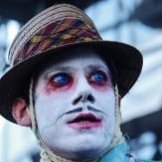







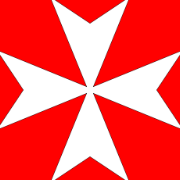


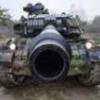
.thumb.jpg.3d6eff3e2f6cc042679bca864bcb2b1a.jpg)
